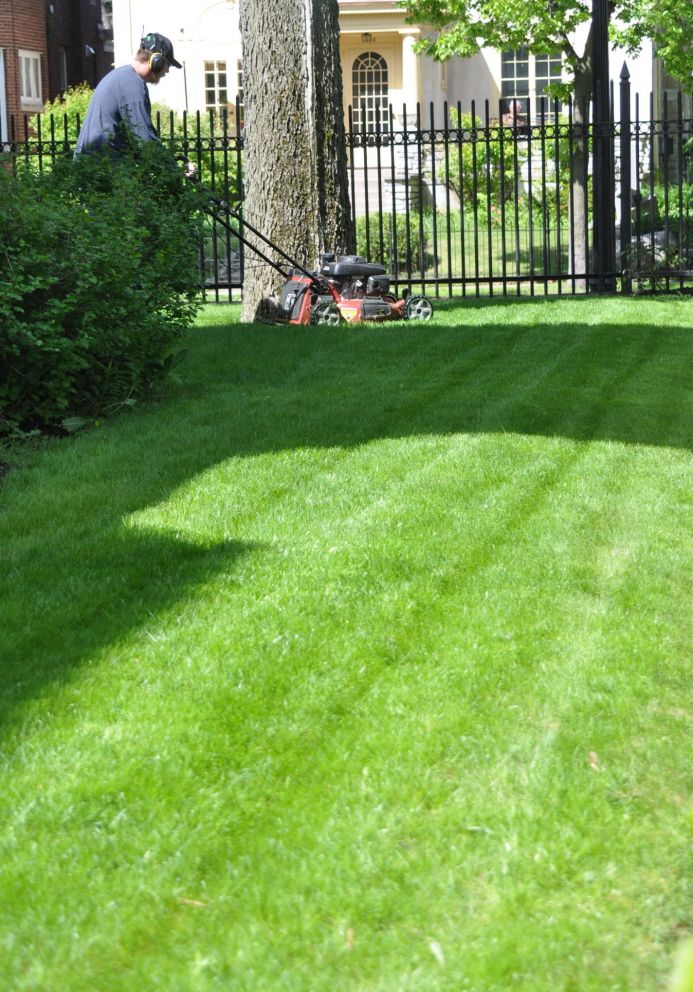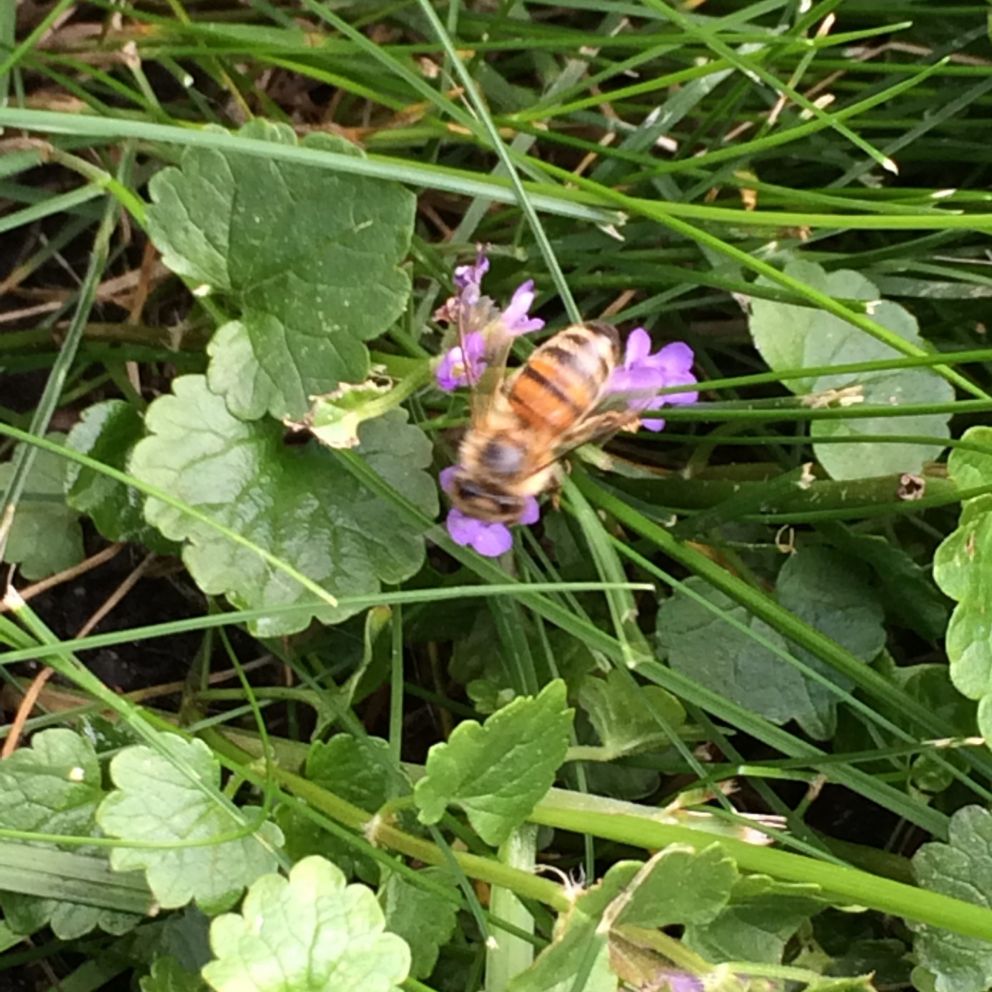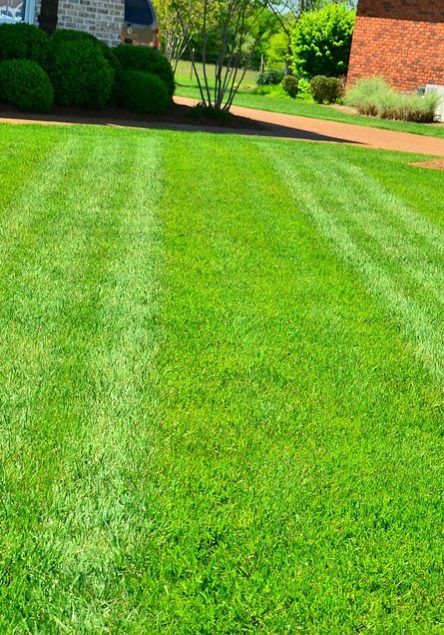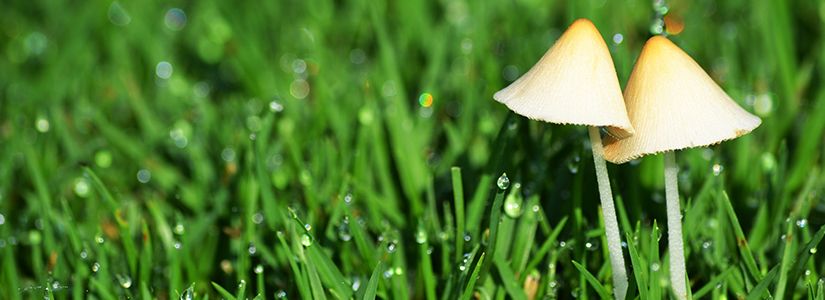Organic Lawn Care

How To: Healthy Lawns
Our obsession with lawns can be traced back to European royalty. By setting aside large swaths of land in lawn instead of agricultural production, aristocrats were able to flaunt their wealth. Today a similar mentality pervades the American landscape. Our ½ acre of freshly mown lawn is intended as a social signal to our neighbors that we are achievers of the American dream.
What we know about lawns impact on the environment is a lot less than dreamy. The turf grass lawn, as the single largest crop in America is simultaneously the largest scale replacement for healthy ecosystems that we’ve sown into the landscape. We use more irrigation, pesticides and fertilizer on our lawns than on any other crop. It’s time for our lawn care practices to turn over a new leaf.
Some sunny days there is nothing better than laying out in the grass and basking in sunlight. Even if we reduce lawns down to a minimum by increasing garden, tree, and shrub cover in our landscape, we still need lawns in some spaces so we can relax outside together. After years of research and training we are proud of our successful organic lawn care management techniques and want to share them with everyone because we believe people should feel safe laying out in the grass without having to worry about rolling around in pesticides.

Maintenance
Mowing:
Most weedy lawns I see are a product of bad mowing practices. The two biggest mistakes I see people make are mowing too short and mowing with a dull / damaged blade. Bad mowing practices are like an attack on your turf that invites weeds, while good mowing practices can help thicken and strengthen the lawn.
-
Never mow shorter than 3”. Grass plants freak out when they are cut shorter than 3” because they don’t have any leaf blade to photosynthesize with. When grass is left at least 3” tall, grass plants can send out horizontal roots and turf is able to thicken up. Typically, the higher you mow your lawn, the thicker it will grow. Lawns that are cut shorter than 3” invite weeds.
-
Never cut off more than 1/3 of the leaf blade height. Grass plants experience shock when they lose more than 1/3 of their height at a time. This means that if you are going to cut the lawn regularly, stay on a weekly schedule during the spring and early summer so grass doesn’t get too long in the meantime.
-
Keep your lawn mower sharpened. Dull and damaged mower blades tear grass and damage it, taking away from grass plants ability to grow horizontal roots. Sharp mower blades make a clean cut that allows the grass plant to heal well after cutting. We sharpen our blades after each day of mowing. You’ll want to sharpen your mower blades at least every 4th or 5th time you mow. Buying a pair of change out blades for your mower will make it easier to sharpen them in batches once a month.

Weeds
If you are growing a “Bee Lawn” you don’t need to worry too much about weeds. Dandelion, Creeping Charlie, White Clover, Self-Heal, and dozens of other weeds offer bees habitat and food in addition to blooming beautifully. In bee lawns we typically pull taller weeds or mow to control them at the end of the season.
If, however you’d like to have an all turf lawn that you can feel safe to walk through, you’ll want to learn to control weeds organically. The main strategy to organic control of weeds is to encourage the lawn to grow with vigor so that weeds have a harder time taking root. The triple header aeration, over-seed, and fertility program above is a great way to keep weed pressure down and increase the health of the lawn at the same time.
In addition to out-growing the weeds by encouraging the lawn, we practice hand pulling of the few weeds that make it through our healthy lawn program. A dandelion puller is a very handy tool for organic lawn maintenance. If you have a thick mat of creeping Charlie or white clover that you’d like to pull, you may want to use a hard steel garden rake. Garden rakes can act like a dozen strong fingers all pulling together at an area of roots.
Bare spots invite weeds. Whenever you pull up weeds, over-seed the disturbed area with turf seed. One great trick is to seed bare areas right before it rains.
Establishment
Starting a new lawn works about the same in large areas as it does in smaller bare spots. We don’t like to use sod because it is grown with pesticides and can be a riskier investment compared to seeding.
- First, Aerate. We always start by aerating the soil thoroughly. Using a core aerator, available for rent from Reddy Rents, we make several (3-4) passes over the ground. Don’t aerate when the ground is wet, it will compact the soil.
- Over-seed. For a strong turf we like the MN-DOT 25-131 Low Maintenance Turf seed mix and / or the Bee Lawn mix, both available locally at Twin Cities Seed.
- Compost. Spread a ½” thin layer of screened compost over the entire space. We love to use Kern Landscape Resources’ leaf compost for our lawn installations.
- Overseed again. At a rate of 2 pounds per 1000 square feet.
- Cover with seedless straw, net-less mesh, or a green paper mulch like Cover Grow.
- Water and keep area moist but not soaked for the entire duration of the turf establishment. It is important that the seedling turf grass not dry out in the sunlight. Once the turf is established, we recommend weaning new lawns off of irrigation and watering entirely over the course of a couple months.
Fertility
-
Your soil has an infinite supply of fertility, your job as a grower is to encourage healthy soil microbes to “mine” minerals out of the soil for feeding plants. To encourage soil health think about your soil as a home for microbes. We use these 3 fertility practices together and we repeat each 3 times per season. Early spring, late summer, and early fall are the 3 timing windows we aim for with this “triple header” fertility plan.
-
Aerate & Over-seed. Every good home for microbes has oxygen in it. Aeration will infuse your soil with air and encourage beneficial soil fungi while over-seeding adds youthful plant energy to your turf. Over-seeding fills your lawn with young grass plants that grow faster and stronger.
-
Fertilizer. Now that you’ve made a home for microbes by aerating, you want to fill that home with food for microbes. We never use water soluble fertilizers because they are all forms of salt and they can easily harm soil microbial life. Instead we use organic non-water-soluble fertilizers because they feed soil the microbes that in-turn feed and protect plants. Our favorite organic fertilizers are made from soy because they are effective and don’t have any strong odor like some organic fertilizers. PJC is our fertilizer manufacturer and we use their 6-0-6 product 3 times per season on our residential lawns, each time we aerate and over-seed.
- Liquid Compost Extract. Now that you’ve made a home for the microbes and filled it with food, you can add in the microbes themselves. We grow high quality worm compost to use as a starter for our Liquid Compost Extract. To make 5 gallons of compost extract place ½ pounds of worm bin compost in a nylon mesh bag. Dunk the mesh bag in a 5-gallon bucket filled with water and vigorously work the compost back and forth under the water for about a minute. If you’re working with high quality compost, you’ll immediately see beautiful, chocolate brown humic acid cloud the water. Don’t let the extract sit around, don’t try to “brew” it into a “compost tea”, instead use it right away. We spray extract onto our lawns after each aeration / over-seed & fertility treatment and we use it as a root dunk for every new plant we install.

Transitioning to Organic
When we transition a lawn from synthetic management to organic, we need to rapidly encourage the growth of beneficial soil fungi so that weeds don’t take over. Weed seeds love to sprout in soils that are dominated by bacteria. As soils mature, the presence of fungi begins to predominate microbial life underground. When soils are disturbed through pesticide use, compaction, and tilling soil fungi is damaged and bacteria blooms thus encouraging weeds.
When pesticides and synthetic fertilizers have been used in turf, we start the transition by adding in fungal food in the form of humates. Humates are the product of long-term microbial processing and fungi love eating them. Granular or liquid humates are available commercially, or you can grow your own humic acid in worm compost. Adding humates to your newly transitioned lawn will help encourage grass and reduce weed pressure.
Minnehaha Falls would love to help you transition your lawn to organic! Contact us today to set up an organic lawn consultation!

